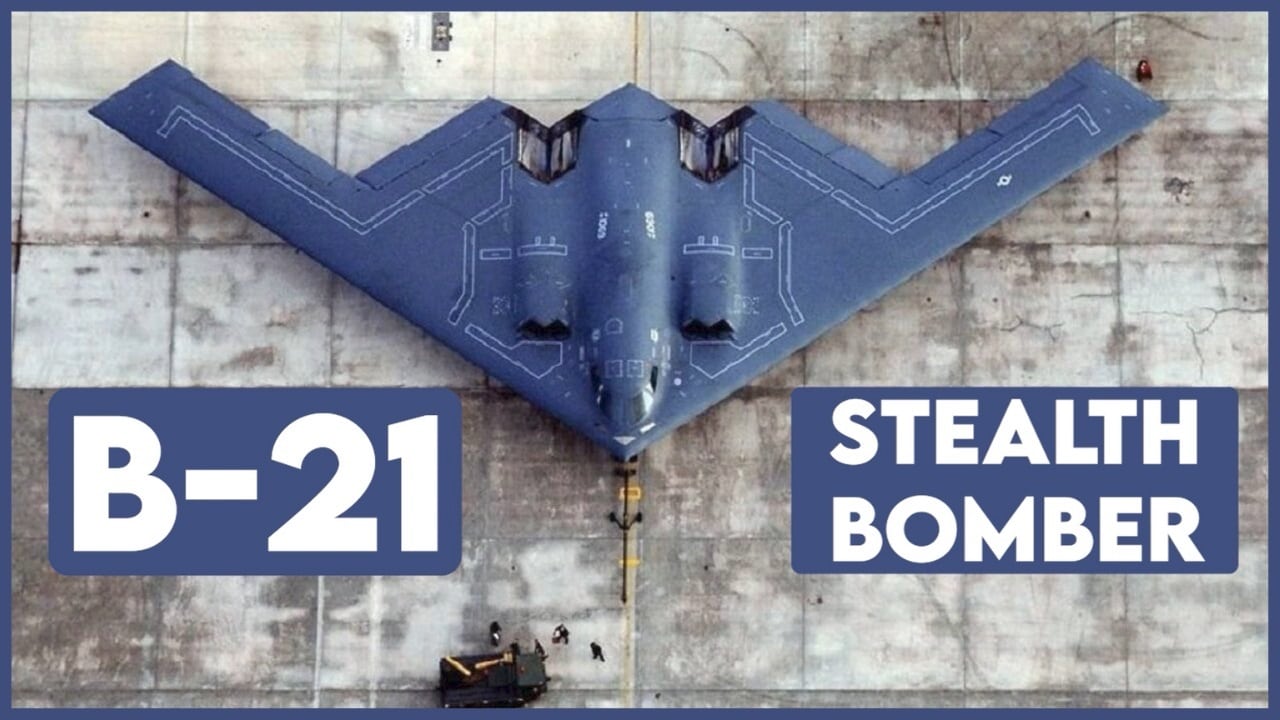The big day is almost here. Not Christmas, which is still weeks out. Rather, after years of speculation and hype, the public will finally get the first official sight of the Northrop Grumman B-21 Raider, which will be unveiled at the company’s facility in Palmdale, California today.
B-21 Raider: Coming Soon
The future long-range strategic bomber of the United States Air Force is advanced enough to qualify as a sixth-generation aircraft, Tom Jones, president of Northrop Grumman’s Aeronautics Systems unit, said in a Nov. 22 interview with Defense News.
The first new Air Force bomber in more than three decades, it is a generational leap in aircraft technology and development.
“The B-21 is the most advanced military aircraft ever built and is a product of pioneering innovation and technological excellence,” Dough Young, sector vice president and general manager at Northrop Grumman Aeronautics Systems said via a release.
“The Raider showcases the dedication and skills of the thousands of people working every day to deliver this aircraft.”
Unveiling the B-21
This is the first public unveiling of a new U.S. Air Force bomber in 34 years; since the Northrop B-2 Spirit made its public debut back in November 1988.
While it will be quite momentous for the program, the Raider is still years away from entering service – and has yet to make its first flight.
However, by the end of the decade, the B-21 will form the backbone of the future Air Force bomber force.
As it enters service, it will initially replace the Cold War-era B-1B Lancer, while it will operate alongside the B-2 Spirit and B-52 Stratofortress.
Eventually, the B-21 Raider will supplant those latter two aircraft as well and will become the Air Force’s lone bomber.
The Air Force Global Strike Command has announced that it would acquire at minimum 100 of the aircraft, while that number could increase to as many as an eventual 200.
Big Effort
The B-21 Raider – named for the 80 men who took part in the World War II raid over Tokyo – was developed utilizing advanced manufacturing techniques.
It will be equipped with breakthrough stealth technology that will ensure it is optimized for operations in highly contested environments.
It will be able to perform long-range conventional and nuclear missions.
Not Cheap
It doesn’t come cheap, however. The estimated cost to develop, purchase and operate 100 aircraft is estimated at $203 billion, or about $2 billion per plane. The number could grow accordingly if additional aircraft are acquired.
Northrop Grumman was awarded the contract to produce the next-generation bomber in 2015, and the company quickly assembled a nationwide team to design, test, and build the B-21.
It was developed via the company’s pioneering digital engineering practices and advanced manufacturing techniques together.
Some 8,000 employees of Northrop Grumman and various other defense contractors of all sizes, spread across 40 states, have been secretly building the Air Force’s new stealth bomber.
B-21 Look Coming Soon
After much built-up, on Friday, Jones – who has spent most of his career unable to share what he does at work – will finally be able to reveal the fruits of the labor from all those individuals.
“I think it’s the first view of what’s going to be a great capability for our country,” Jones explained.
Even then, few details are expected to be made public.
The Air Force will keep much of the effort a secret so that near-peer adversaries, including China and Russia, and other nations, aren’t able to copy the B-21 design – or worse, find ways to shoot it down.
First Flight Coming
Friday’s event will be the official “coming out” for the initial prototype B-21 Raider – numbered 001 and referred to as T1 for first flight test aircraft – but the aircraft still has yet to make its first flight, which is now on track for next year. The test jet will also closely mirror production models.
Northrop Grumman is reported to have six aircraft in various stages of production, and ground tests will begin in the New Year.
Since earlier this year, the defense contractor has carefully moved forward with the aircraft. This has included testing, final assembly, and even the application of the special coatings and paint to get it ready for the public unveiling. Then over the next few months, the T1 will undergo additional testing to ensure it is finally ready for that first flight. This will include powering systems on and off, running the engines, performing taxiing test runs, and other standard integration tests.
The first flight will take place at Edwards Air Force Base (AFB), California, and it will likely be an event that will draw much attention.
Yet, for now, Friday’s unveiling will be the biggest moment for the B-21 Raider to date.
Photos of the B-21 Raider and B-2:
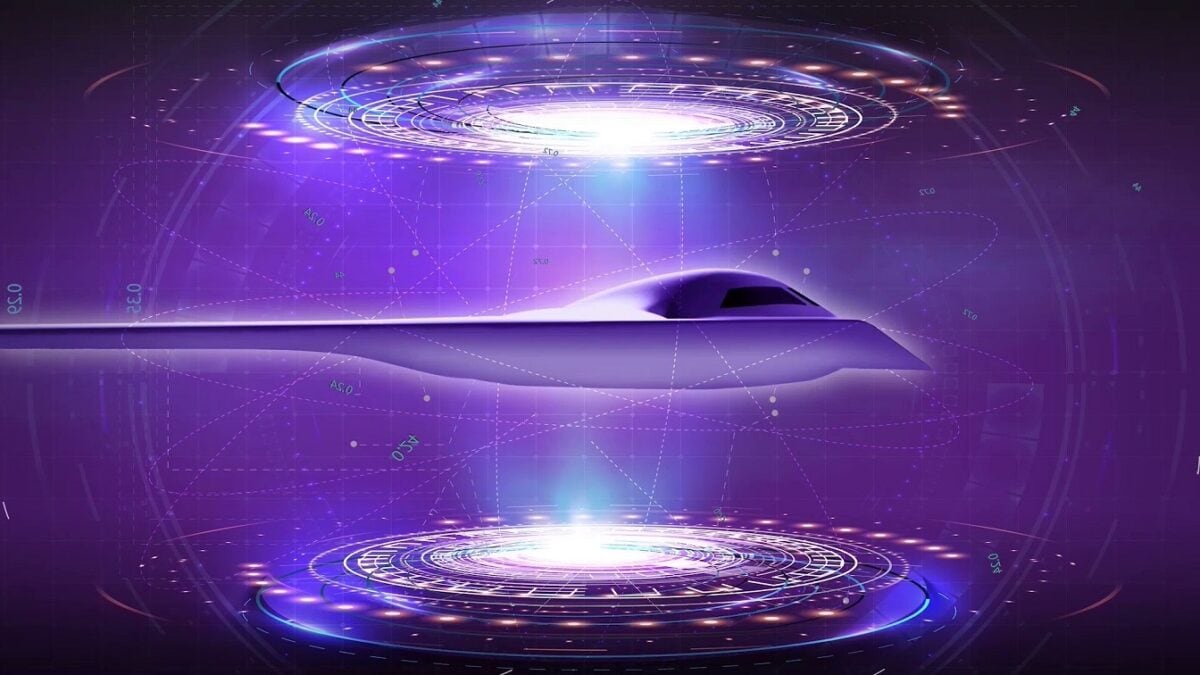
Northrop Grumman
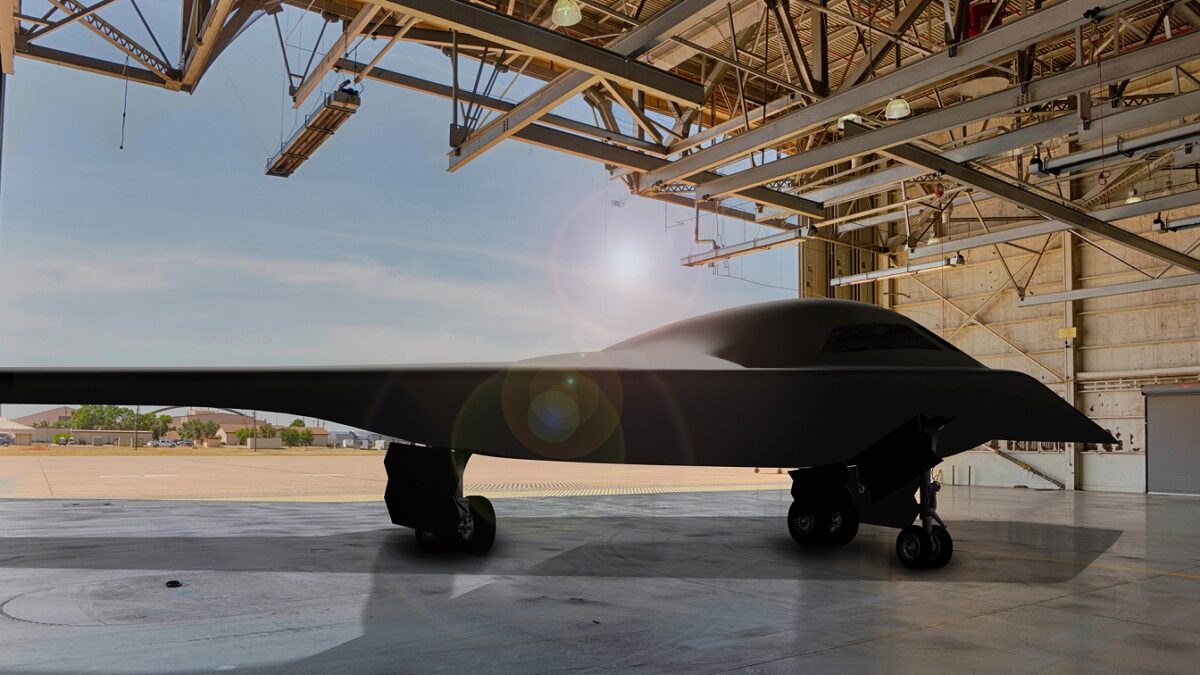
Artist rendering of a B-21 Raider concept in a hangar at Dyess, Air Force Base, Texas, one of the future bases to host the new airframe. (Courtesy photo by Northrop Grumman)
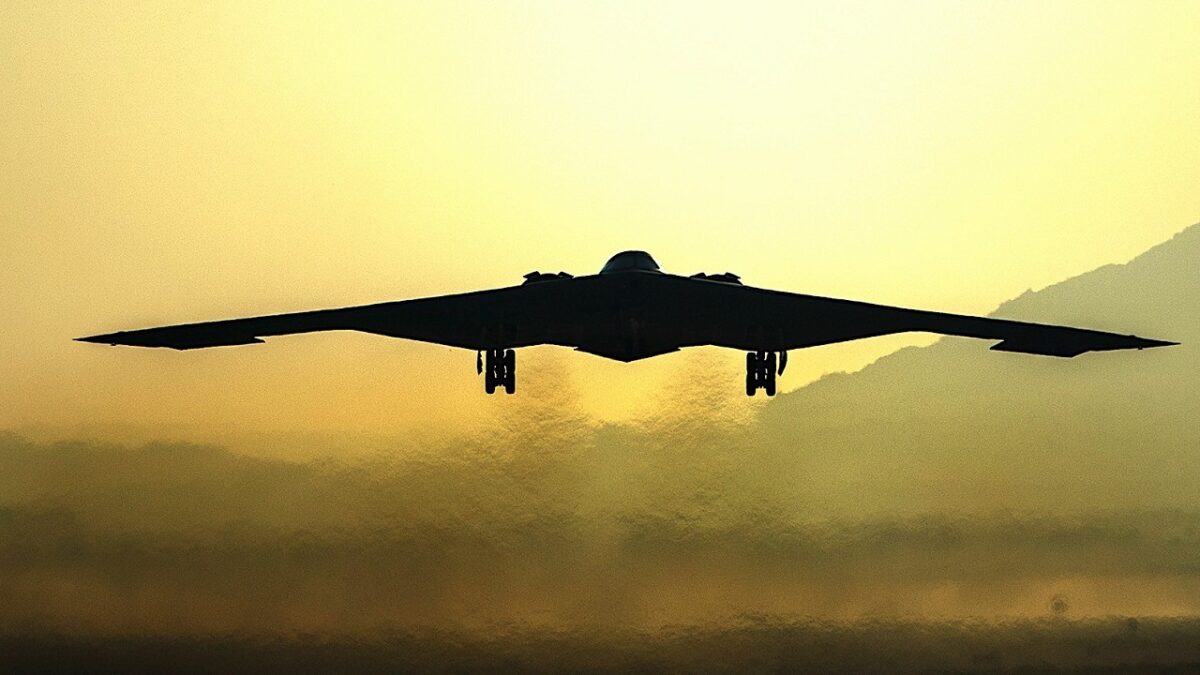
B-2 Bomber. Image Credit. U.S. Air Force.
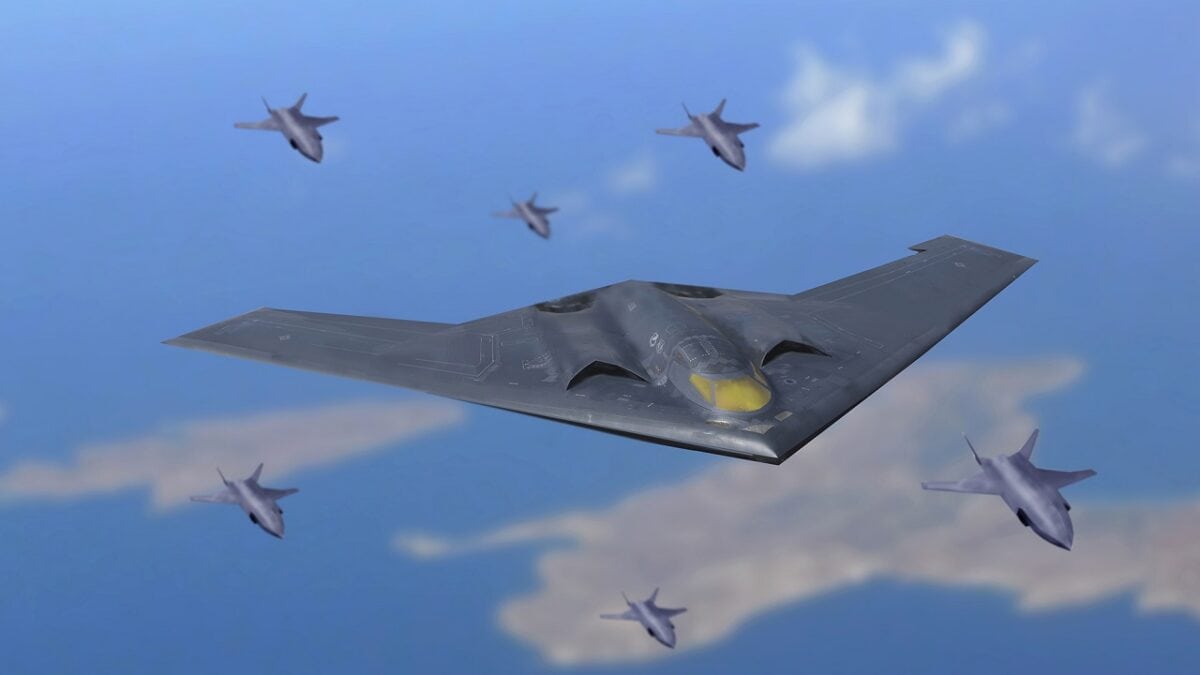
An artist illustration depicts a U.S. Air Force extended-range B-21 Raider escorted on a mission by armed unmanned next generation air dominance platforms. This fictional bomber features longer, wider wings, and a deeper fuselage that accommodates larger fuel tanks and dual weapons bays that enables the bomber to carry a much larger and varied payload. Mike Tsukamoto/staff; Greg Davis/USAF

A U.S. Air Force B-2 Spirit “Stealth” bomber, 393rd Expeditionary Bomb Squadron, 509th Bomb Wing, Whiteman Air Force Base, Mo., flies over the Pacific Ocean after a recent aerial refueling mission, May 2, 2005. The Bombers are deployed to Anderson Air Force Base, Guam, as part of a rotation that has provided the U.S. Pacific Command a continous bomber presence in the Asian Pacific region since February 2004, enhancing regional security and the U.S. commitment to the Western Pacific. (U.S. Air Force photo by Tech Sgt. Cecilio Ricardo) (Released)
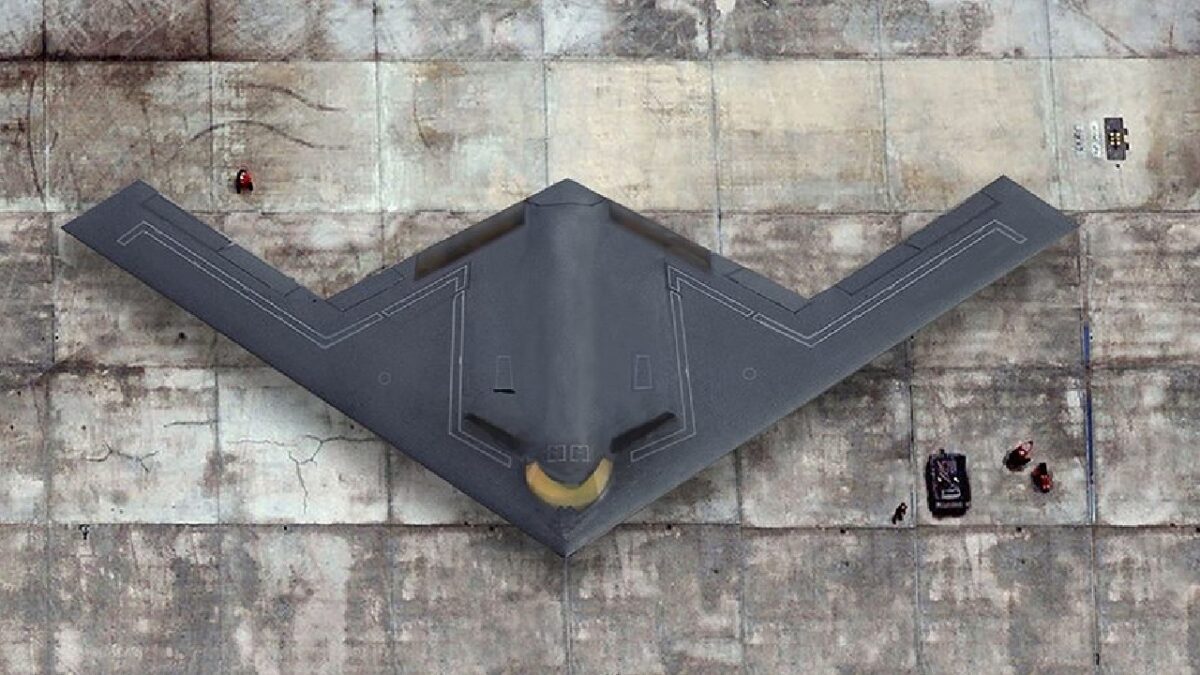
B-21 Raider artist rendering. Image Credit: Creative Commons.
A Senior Editor for 19FortyFive, Peter Suciu is a Michigan-based writer. He has contributed to more than four dozen magazines, newspapers, and websites with over 3,000 published pieces over a twenty-year career in journalism. He regularly writes about military hardware, firearms history, cybersecurity, and international affairs. Peter is also a Contributing Writer for Forbes and Clearance Jobs. You can follow him on Twitter: @PeterSuciu.

